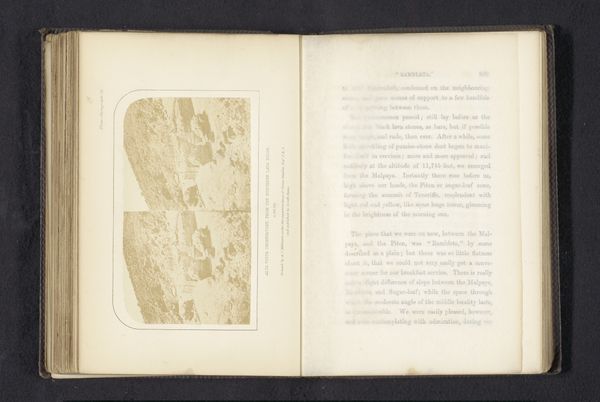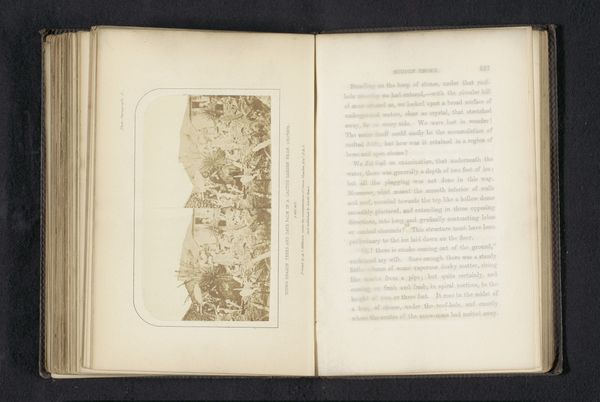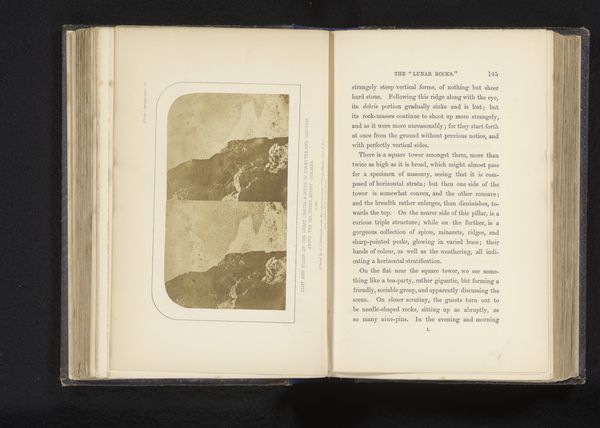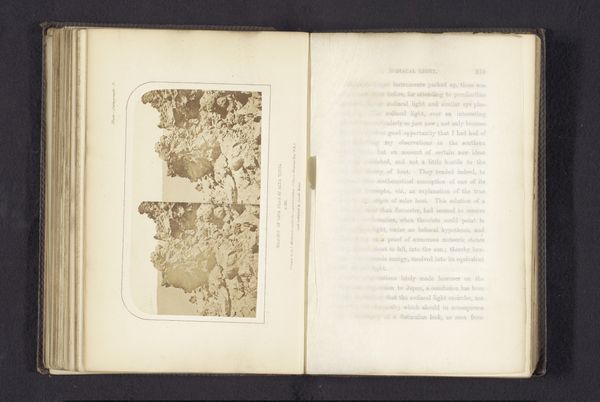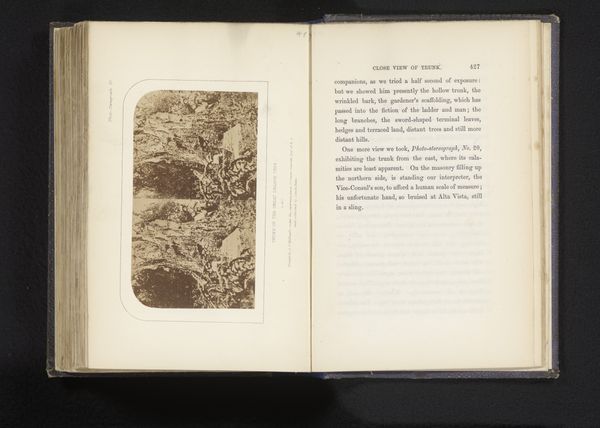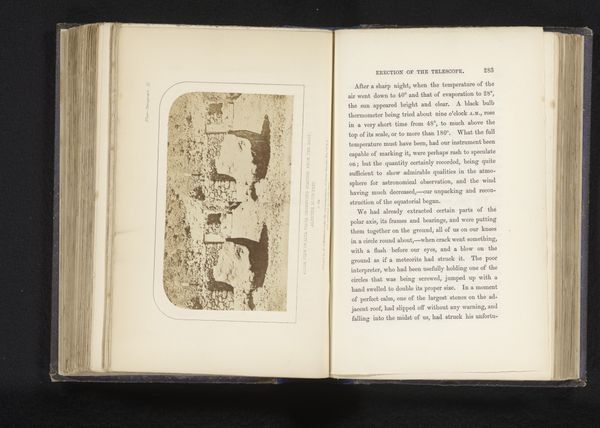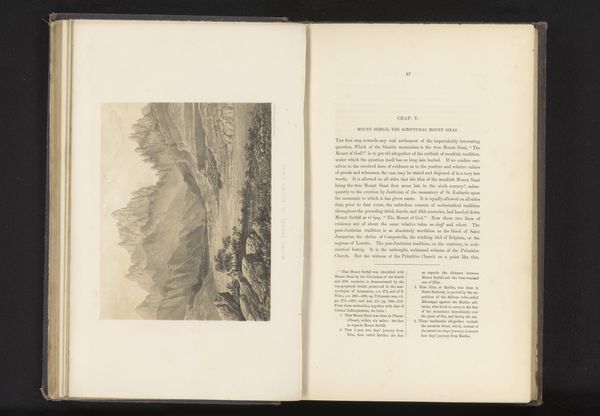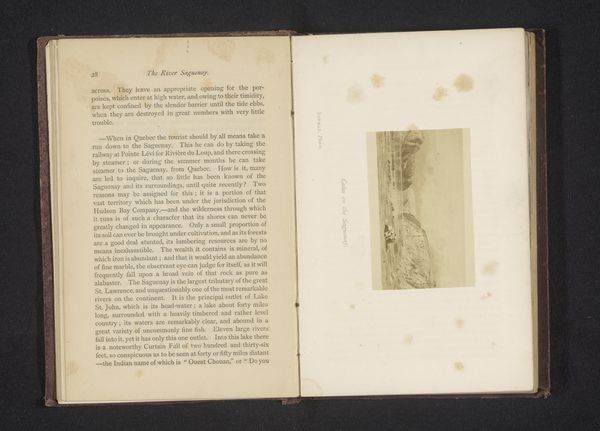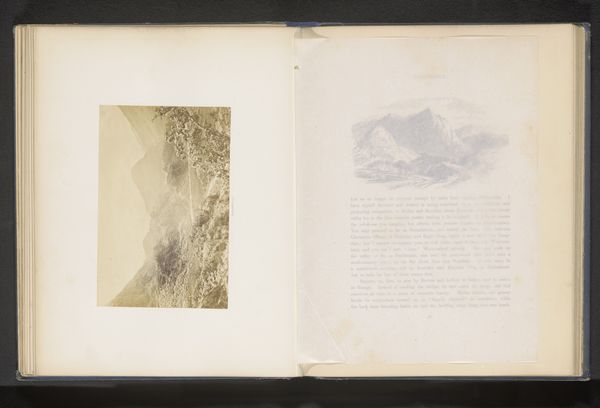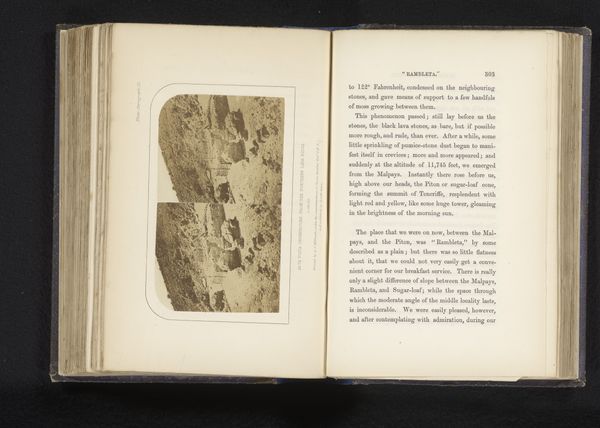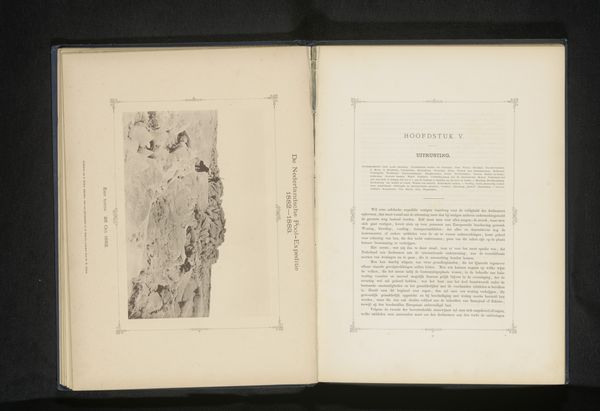
Dimensions: height 69 mm, width 123 mm
Copyright: Rijks Museum: Open Domain
Editor: Here we have Charles Piazzi Smyth's "Trachyte block on Guajara," a print dating from before 1886, showing a stark mountain landscape. The materiality of this early photographic print is striking, it’s presented in an open book... almost like a scientific document. What strikes you about this piece? Curator: What interests me most is the industrial and scientific context informing its creation. Smyth was an astronomer. This image exists because of his need to document and classify. Look at the textures, almost geological in detail. It's not just a landscape; it's a study, enabled by technological advances in photography and printing. What implications do you see arising from this intersection of science and image-making? Editor: I suppose it shifts the perspective. It's no longer just a pretty scene, but an almost clinical recording. But doesn't the romantic framing complicate that a bit? The dramatic peaks suggest more than mere documentation. Curator: The Romanticism you mentioned could also be tied to labor. Who collected these materials? How was this photographic print produced? Consider the social dynamics that influenced the act of creation and dissemination of this image; Romanticism doesn’t negate material conditions of production. What power structures are potentially being reinforced? Editor: I never considered that aspect before. It really reframes the work when you think about the labor involved in getting this image produced and into a book. Curator: Exactly. This image prompts us to consider how artistic, scientific, and industrial endeavors are intertwined, shaping our perceptions of the world. Editor: I’ll certainly look at photography of this period differently now, focusing more on its means of production.
Comments
No comments
Be the first to comment and join the conversation on the ultimate creative platform.
